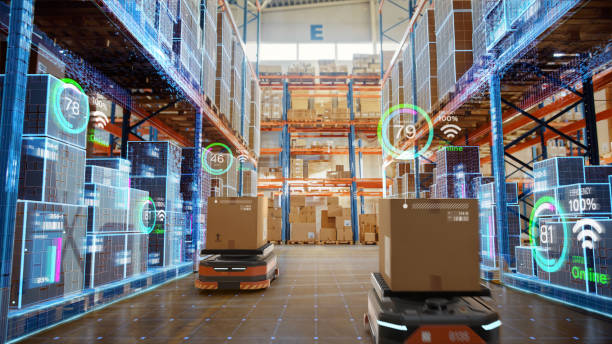In the rapidly evolving landscape of logistics, the integration of automation and artificial intelligence (AI) is revolutionizing traditional supply chain models. As businesses strive for greater efficiency, accuracy, and responsiveness, the concept of “Logistics on the Edge” emerges, signifying a shift towards decentralized and automated systems. This article explores how embracing automation and AI is reshaping the future of logistics, unlocking new possibilities for dynamic and adaptive supply chains.
The Rise of Automation in Logistics
Automation has become a key driver in the logistics industry, streamlining operations and reducing manual errors. From autonomous vehicles to robotic warehouse systems, the adoption of automation is transforming the way goods move through the supply chain. Automated systems not only enhance speed and accuracy but also contribute to cost savings by minimizing labor-intensive tasks.
Autonomous Vehicles: Self-driving trucks and drones are increasingly being utilized for transportation, providing a faster and more efficient means of delivery. These vehicles leverage AI algorithms to navigate complex routes, optimize fuel efficiency, and enhance overall logistics performance.
Robotic Warehousing: Automated storage and retrieval systems (AS/RS) are revolutionizing warehouse management. Robots equipped with AI capabilities can efficiently handle tasks such as picking, packing, and sorting, reducing human intervention and improving order fulfillment speed.
Artificial Intelligence's Role in Adaptive Logistics
AI plays a pivotal role in making logistics more adaptive and responsive to dynamic changes. Machine learning algorithms, predictive analytics, and real-time data processing empower logistics providers to make informed decisions and proactively address challenges. This shift towards intelligent logistics, often referred to as Logistics 4.0, enables businesses to stay ahead of the curve.
Predictive Analytics: AI algorithms analyze historical data to predict demand patterns, identify potential bottlenecks, and optimize inventory levels. This proactive approach helps companies avoid stockouts, reduce excess inventory, and enhance overall supply chain resilience.
Real-time Monitoring: AI-driven monitoring systems provide real-time insights into various aspects of the supply chain, including vehicle tracking, inventory levels, and delivery status. This visibility allows logistics managers to promptly respond to disruptions and optimize routes for efficient transportation.
Enhancing Customer Experience:
The integration of automation and AI in logistics goes beyond operational efficiency; it directly impacts the customer experience. As consumers demand faster deliveries, accurate tracking, and transparent communication, logistics on the edge becomes crucial for meeting these expectations.
Dynamic Routing: AI algorithms optimize delivery routes in real-time based on factors such as traffic conditions, weather, and delivery priorities. This ensures timely and efficient deliveries, contributing to an enhanced customer experience.
Personalized Services: AI enables logistics providers to offer personalized services by analyzing customer preferences and behavior. This customization can include delivery time slots, packaging preferences, and even eco-friendly options, creating a more tailored and satisfying customer journey.
Overcoming Challenges and Ensuring Security
While the benefits of embracing automation and AI in logistics are evident, there are challenges that need to be addressed. Cybersecurity concerns, the need for standardized protocols, and workforce adaptation are among the hurdles that the industry must navigate to fully realize the potential of Logistics on the Edge.
Conclusion
Logistics on the Edge represents a paradigm shift in the way businesses approach supply chain management. The integration of automation and AI not only enhances efficiency and accuracy but also enables logistics systems to adapt dynamically to the ever-changing demands of the modern world. As the industry continues to evolve, embracing these technologies will be crucial for staying competitive and meeting the growing expectations of consumers in an era where speed, precision, and adaptability are paramount.






